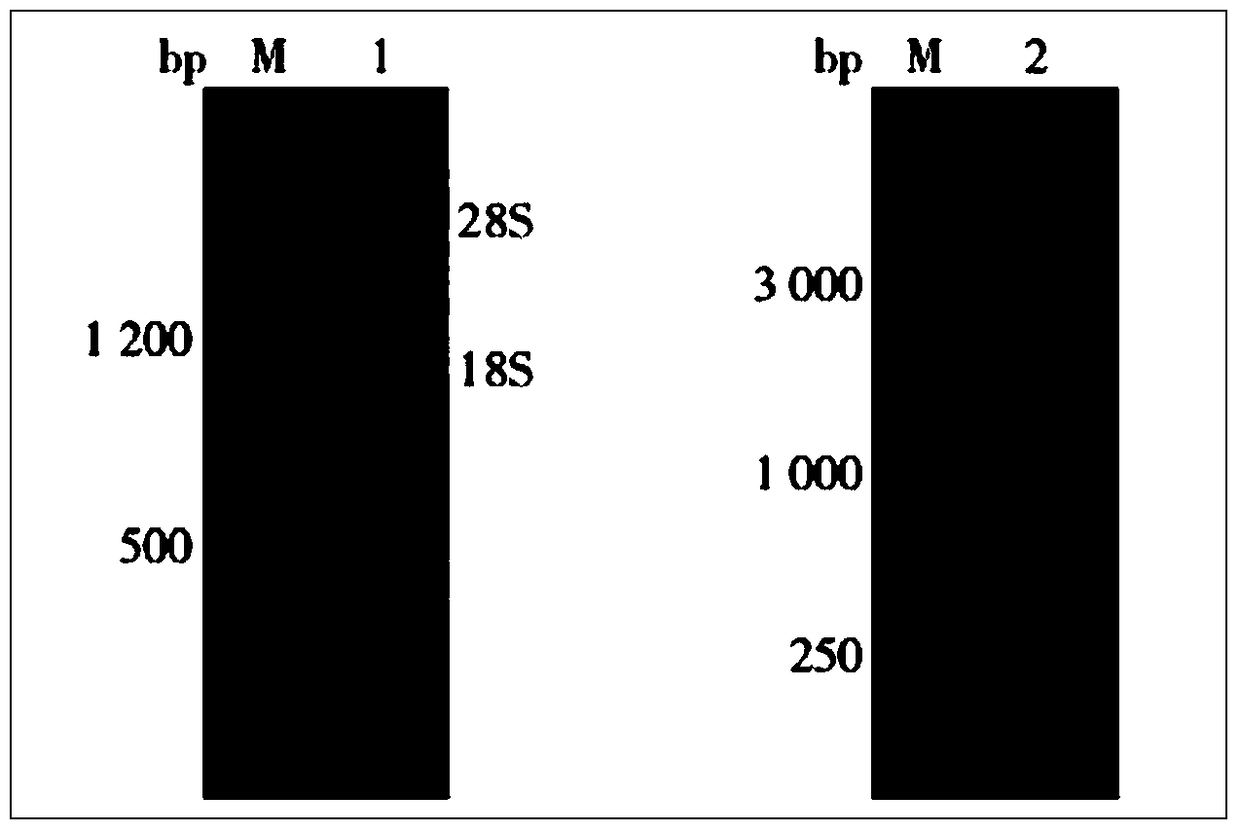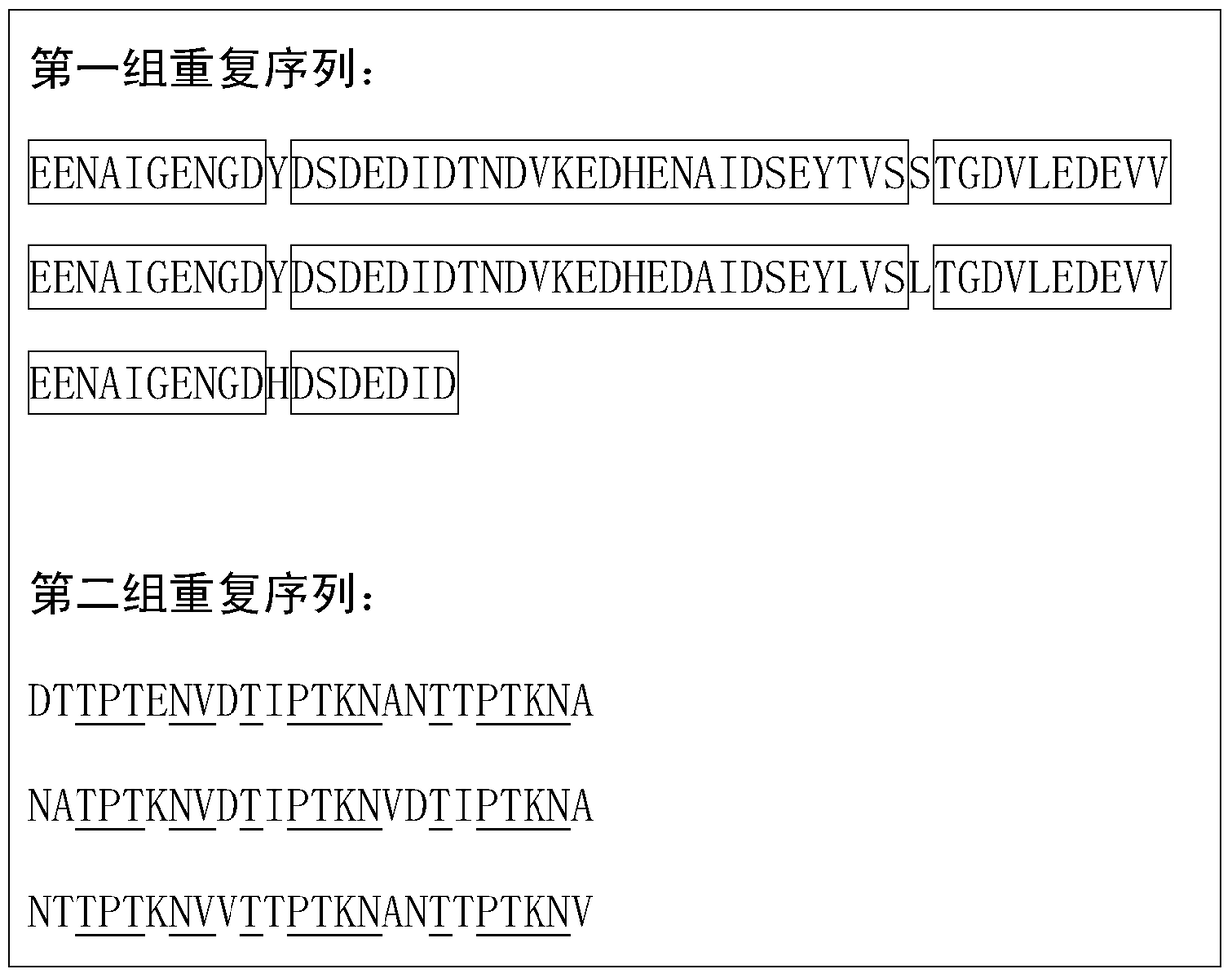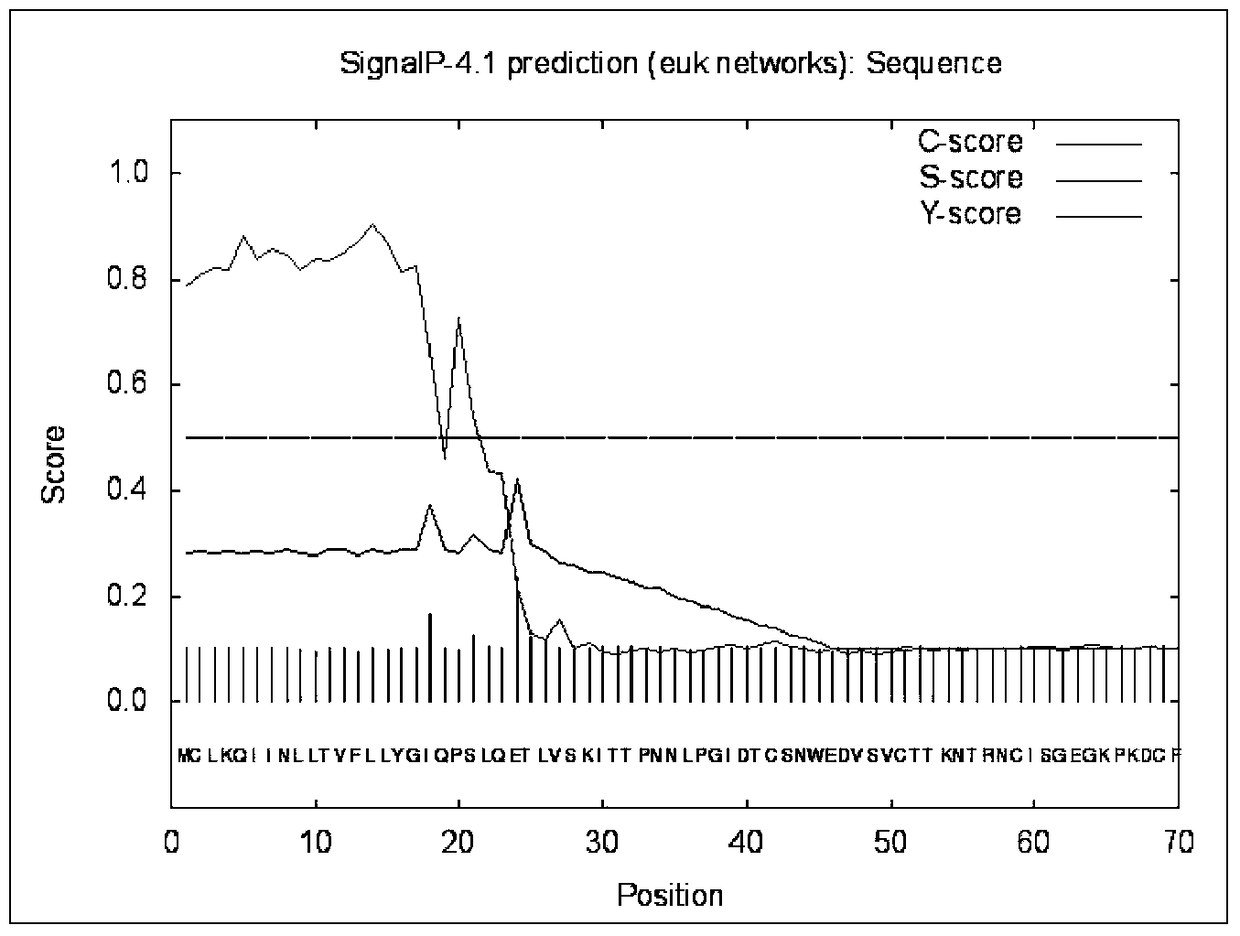Babesia vole bm186 antigen and its application
A technology of bm186 and Babesia, applied in the field of bioengineering, can solve the problem of low sensitivity of antigens and methods, and achieve the effect of preventing Babesia infection with high specificity and sensitivity
- Summary
- Abstract
- Description
- Claims
- Application Information
AI Technical Summary
Problems solved by technology
Method used
Image
Examples
Embodiment 1
[0044] Example 1 Collection of Babesia vole:
[0045] Babesia microti selected from the Babesia microti provided by the Institute of Experimental Zoology, Chinese Academy of Medical Sciences PRA-99 TM Insect strain. Babesia microti was injected intraperitoneally, and BALB / c mice were inoculated. About 4 days later, the infection rate of protozoaemia reached 20%. Anticoagulant whole blood was collected. Leukocytes were separated from erythrocytes using Percoll density gradient centrifugation to remove leukocytes. The erythrocytes were lysed by adding erythrocyte lysate, and the precipitate was collected after centrifugation, which was determined to be Babesia worms by microscopic examination.
Embodiment 2
[0046] The separation and purification of embodiment 2 mRNA:
[0047] The total RNA of Babesia microti was extracted with TRIzol reagent from Invitrogen Company, and the mRNA was isolated and purified from the total RNA according to the instructions of the Oligitex mRNASpin-Column Kit kit. And measure by agarose gel electrophoresis and ultraviolet analysis, detect the quality of mRNA (such as figure 1 shown).
[0048] Example 2 Transcriptome sequencing and analysis of Babesia microti:
[0049] The sequencing and analysis of the transcriptome were completed by Shanghai Ouyi Biomedical Technology Co., Ltd. The SMART cDNA library for sequencing was constructed using the SMART cDNA Library construction Kit kit from Clontech. Large-scale transcriptome sequencing was performed using a Roche 454 sequencer.
[0050] Preprocess the raw data of the transcriptome, remove the adapter sequence and primer sequence, and remove low-quality and short-length sequences. A total of 708,175 p...
Embodiment 3
[0052] Example 3 Search for candidate antigen genes:
[0053] For the 9377 Isotigs and 23088 Singlets in the transcriptome, first use the Tandem Repeats Finder software (version 3.3.0.0) to find tandem repeats, and set the parameters: "Alignment Parameters [match, mismatch, indel]" to 2, 7, 7 ; "Minimum Alignment Score To Report Repeat" is 50; "Maximum Period Size" is 2000. Then use NCBI's Open Reading Frame Finder (http: / / www.ncbi.nlm.nih.gov / projects / gorf / ) to find the cDNA sequence with a Minimum Alignment Score To Report Repeat value greater than 50; The amino acid sequence was predicted to contain signal peptide sequence using SignalP 4.1 software (http: / / www.cbs.dtu.dk / services / SignalP / ).
[0054] Using the above strategy, a total of 8 assembled sequences containing tandem repeat sequences and signal peptide sequence structures were found in the transcriptome of Babesia microti. Among them, the sequence of Isotig00186 was compared by BLAST, and it was a novel gene. The...
PUM
| Property | Measurement | Unit |
|---|---|---|
| diameter | aaaaa | aaaaa |
Abstract
Description
Claims
Application Information
 Login to View More
Login to View More - R&D
- Intellectual Property
- Life Sciences
- Materials
- Tech Scout
- Unparalleled Data Quality
- Higher Quality Content
- 60% Fewer Hallucinations
Browse by: Latest US Patents, China's latest patents, Technical Efficacy Thesaurus, Application Domain, Technology Topic, Popular Technical Reports.
© 2025 PatSnap. All rights reserved.Legal|Privacy policy|Modern Slavery Act Transparency Statement|Sitemap|About US| Contact US: help@patsnap.com



